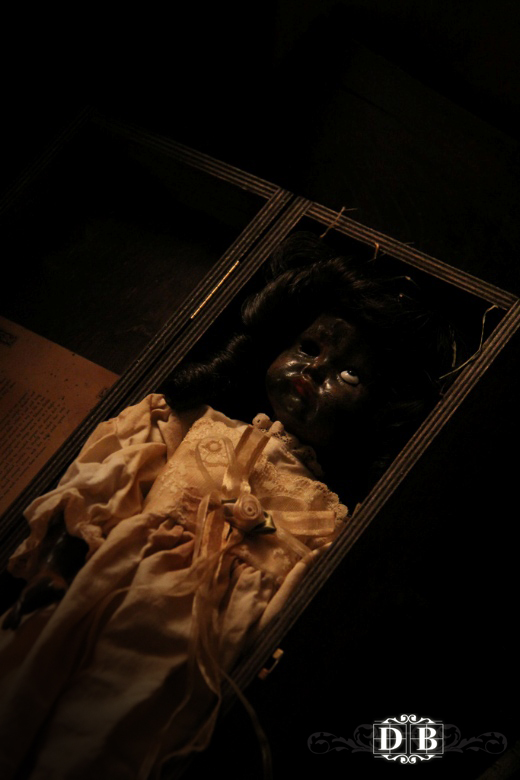Dolly Darko - the seance doll
The child mortality rate in Victorian England was high. With a quarter of babies dying before their first birthday the funeral parlours always had an extensive assortment of infant coffins. Even the upper classes could not escape the sickening miasma of London or the filthy water thick with cholera. For parents these were sad times and for the unfortunate few the ritual of séance became the only method of extending their cruelly short parenthood.
Children’s toys such as balls and musical instruments were used in séance to try and entice the spirit of a child through play. Out of all spirit contact child spirits were the hardest to engage with. With a limited or non existent vocabulary conventional methods such as talking boards were not feasible. The child spirit was no different to a living child, shy and scared of initial interaction with unknown adults. Consequently new methods had to be devised to lure child spirits into the circle so that they could be once again reunited with their bereaved parents.
In 1882 Joseph Maskelyne & Son, a Midlands toy manufacturer produced the first doll designed for séance use. Maskelyne, a ceramics expert who mastered his trade at the Royal Crown Derby factory as a youngster later managed his own business making fine porcelain dolls and miniatures for doll’s houses. Maskelyne was also a well known spiritualist in the area and regularly attended as well as hosted séances.
A London Spiritualist named Sir Arthur Twigg was aware of the difficulties in making contact with child spirits and due to the high infant mortality rates the séance requests from bereaved parents was overwhelming.
Twigg was aware of Maskelyne & Son as a manufacturer of dolls and proposed the idea of producing a doll purely for séance purposes. Unlike conventional hollow ceramic dolls the séances doll would be a solid cast to prevent easy breakage from over zealous spirits. It would also be blessed by the Spiritualist church and the clay would be mixed with salt for purification and to prevent evil entities from interacting with the doll.
Between 1882 and 1915 Maskelyne & Son produced only forty two of these melancholic looking dolls. Fifteen remained in England while the remainder made their way to the US. A shipment of three dolls was lost in 1912 when RMS Titanic sank on her maiden voyage.
The doll’s solemn quality and air of neglect idyllically conveys its real purpose – a toy for the dead. Now highly sought after amongst antique dealers and collectors of spiritualist paraphernalia, these séance dolls reflect a sad and long forgotten period of history. As a child becomes attached to a toy in life it can equally become as attached in death. Consequently the Maskelyne Séance Dolls are purportedly harbourers of intense juvenile spirit energy which act as a direct link to the spirit world. When used for its intended purpose the séance doll is renowned for producing unparalleled results. It should be noted that only experienced mediums should attempt séance with this doll, child spirits are lonely and therefore may wish to overstay their welcome…















